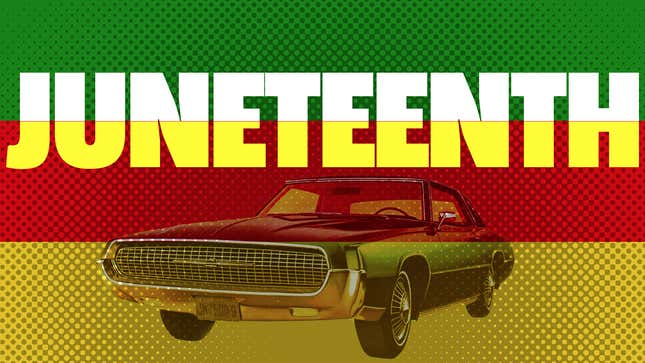
Good morning and a happy Juneteenth! I’ll be honest with you, it is frankly embarrassing that it took until recent events for our publications to acknowledge the day the last slaves were finally freed in America, but here we are.
This is a deeply weird time and we are in danger of losing focus on this important moment and going back to our brutal normal. We got bored with a pandemic while it is still raging for crying out loud. It’s important not to be distracted and taking a day to acknowledge this shining moment in American history is a good way to keep that focus.
If you’re unfamiliar with Juneteenth, I’ll let our colleagues at The Root explain:
In 1865, enslaved Africans on Galveston Island, Texas, had been declared free two years earlier but didn’t know it. With the United States still divided over the institution of slavery and recovering after the Civil War, members of the Confederacy weren’t eager to spread the word.
Only after Union soldiers, led by Major Gen. Gordon Granger, worked their way South for more than two years after President Abraham Lincoln issued the Emancipation Proclamation did word reach Galveston Island. On June 19, 1865, known as Juneteenth—a melding of the day’s month and date—the last remaining slaves in America were declared free. Juneteenth, America’s “second Independence Day,” is now celebrated around the country. It is officially observed in 43 states and is a state holiday in Texas, home of the last to know.
There are conflicting explanations for the more than two-year delay of the news that slavery had ended in Texas. Among the possible reasons: Plantation owners withheld the news; federal troops allowed the delay so that slave owners could reap one final cotton harvest before the Emancipation Proclamation—which was issued on Jan. 1, 1863, to free the slaves in the Confederate South—was enforced; and a messenger who was on his way to Texas to deliver the news was murdered. Adding to the issue that made Texas the last holdout was that Union troops never made successful inroads against the Confederacy in that state.
Whatever the reason, June 19, 1865, is regarded as the day all enslaved people in the nation were finally free. “There were many emancipation days prior to June 19, 1865, in other states, but each of those days celebrated freedom while Texas still had enslaved people,” Galveston native Sam Collins tells The Root. “Galveston, Texas, represents the last place enslaved people were freed after the Civil War. It’s the day slavery finally ended everywhere in the United States, and we should celebrate that day.”
Imagine being one of the last slaves to throw off your chains (two years after it was official!) in a country that shackled you and your ancestors for centuries, knowing it wouldn’t happen again to your children. Of course, it was not a perfect moment. The Reconstruction Era in the U.S. directly after the Civil War would prove to black Americans that the more things change, the more they would stay the same. Black Americans have had to fight and win their liberties piece by agonizing piece in the 155 years since the first Juneteenth.
Jalopnik is going to be a little quiet today, rerunning a few blogs about black innovators in automotive, as well as a few new posts mixed in, just because we like you. It is our intention to take today to honor the moment every American became free and recognize the struggle towards justice we still face.
As slavery abolitionist Theodore Parker said:
I do not pretend to understand the moral universe; the arc is a long one. My eye reaches but little ways; I cannot calculate the curve and complete the figure by the experience of sight, I can divine it by conscience. And from what I see I am sure it bends towards justice.
Though history’s arc towards justice seems to be as imperceptible today as it was in Theodore Parker’s time, this step, and this moment, are worthy of celebration.